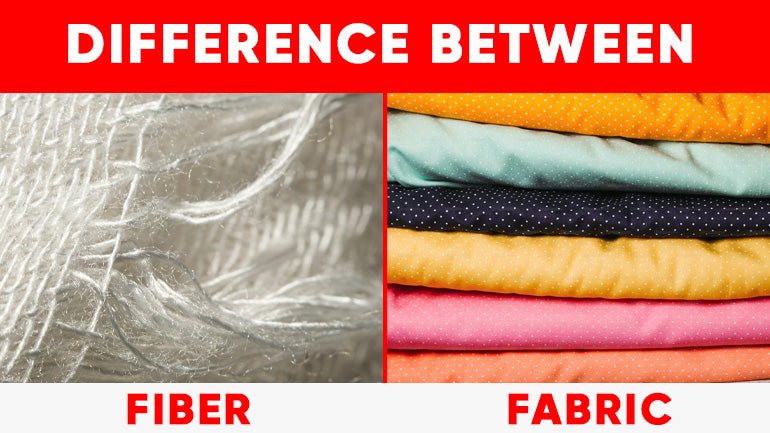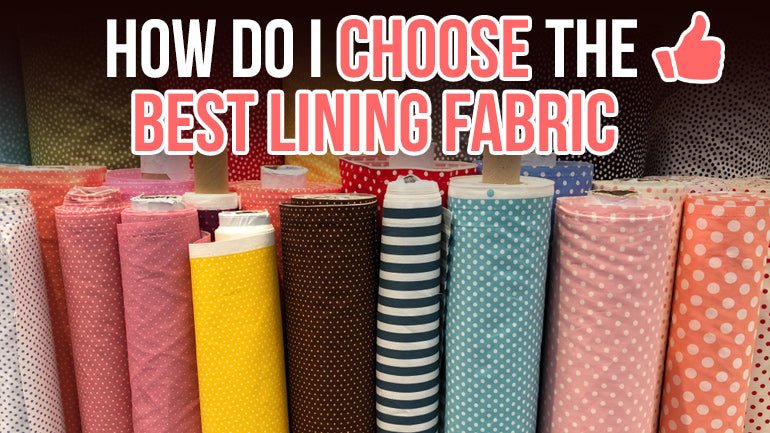In the world of textiles and clothing, the terms "fiber" and "fabric" are often used interchangeably, leading to confusion about their actual meanings and distinctions. It's crucial to grasp the differences between these two fundamental components that shape our everyday wardrobes.
From natural fibers like wool and silk to synthetic ones like polyester and nylon, understanding their origins and characteristics contributes to our comprehension of the diverse world of textiles.
Have you ever wondered about the origins of your clothing and how fabrics are created? The clothes we wear are primarily made from fabrics, and these fabrics often consist of a blend of fibers.
Here we will discuss the difference between fibers and fabrics, exploring how fabrics are intricately constructed from fibers and yarn and shedding light on the key distinctions between them.
Fiber vs. Fabric
While fibers lay the groundwork for textile creation, it is through the intricate processes of spinning and weaving that they transform into fabrics, the versatile materials that adorn our lives. Yarns, the amalgamation of individual fibers, serve as the stepping stone to creating fabrics.
These elongated strands, woven together through various degrees of twisting, set the stage for the intricate artistry of textile production.
Using an array of techniques such as weaving, knitting, braiding, felting, and twisting, the transformation of yarn into fabrics occurs. This intricate journey embodies the synthesis of human ingenuity and natural resources, underscoring the seamless integration of creativity and craftsmanship that defines the textile industry.
Is Fiber a Type of Fabric?
No, fiber is not a type of fabric. It is the foundational element from which fabrics are created. Fibers are long and thin materials that serve as the primary building blocks of fabrics. These fibers are significantly longer than wide, with distinct properties like flexibility, cohesiveness, strength, elasticity, fineness, durability, and luster.
What are Examples of Fibers and Fabrics?
The universe of fibers and fabrics is diverse, encompassing natural and man-made variations. Natural fibers, deriving from the organic realm, boast an assortment of origins. Among these are animal-based fibers, such as the illustrious wool extracted from sheep and the lustrous silk produced by silkworms.
Furthermore, plant-based fibers, including the ubiquitous cotton from cotton plants and the resilient flax, contribute to the rich tapestry of natural textiles.
On the other hand, man-made fibers comprise synthetic and regenerated categories. Synthetic fibers, meticulously engineered through human intervention and derived from artificial components like petrochemicals, exemplify innovation in the textile industry. Such fibers include resilient polyester, robust nylon, and stretchable spandex, known as Lycra or elastane.
Conversely, regenerated fibers represent an intriguing fusion of natural origins and human ingenuity. These fibers are born from natural substances like cellulose or protein, which are then extensively modified during the manufacturing process.
Rayon, extracted from tree wood fiber/pulp, and bamboo fiber, derived from the resilient bamboo plant, represent the ingenuity and versatility of regenerated fibers, underscoring their vital role in contemporary textile production.
How do you Identify Fibers and Fabrics?
Identifying fibers and fabrics demands a discerning eye and an understanding of their distinct properties. Natural fibers often exhibit specific characteristics unique to their origins. Wool, for instance, can be recognized by its inherent warmth and texture, while silk's distinctive smoothness and sheen set it apart.
Cotton's breathable quality and flax's durability provide further cues in differentiating these natural fibers.
Contrastingly, man-made fibers, whether synthetic or regenerated, carry distinct traits that aid in their recognition. The resilient and versatile nature of polyester, the sturdy and flexible attributes of nylon, and the remarkable elasticity of spandex facilitate their identification within the textile landscape.
Understanding Textile Fiber
Textile fiber refers to any material that can be spun into yarn or made into fabric. It is the fundamental unit in the production of textiles and plays a crucial role in determining the characteristics and properties of the final fabric.
Textile fibers can be broadly categorized into two main classifications: natural and man-made fibers, each encompassing a diverse range of materials with distinct features and applications.
Classification of Textile Fiber
1. Natural Fiber
Natural fiber is derived from natural sources such as plants and animals, and natural fibers include cotton, wool, silk, hemp, and jute, among others. These fibers are known for their breathability, comfort, and biodegradability, making them popular in the textile industry for various apparel and household items.
2. Man-Made Fiber
Man-made fiber is also known as synthetic fibers, and man-made fibers are chemically produced and designed to replicate or enhance the properties of natural fibers.
Common examples include polyester, nylon, acrylic, and rayon, each engineered to exhibit specific characteristics such as durability, elasticity, and water resistance, catering to diverse textile applications.
What is Fabric?
Fabric is the end product of the interweaving, knitting, or bonding of fibers or yarns. It represents the tangible material utilized in clothing, home furnishings, and various industrial and commercial products.
Fabrics can be created through various techniques such as weaving, knitting, or bonding, resulting in the formation of different textures, patterns, and structures, each catering to specific purposes and requirements.
Classification of Fabric
Fabrics can be classified based on various factors, including their composition, texture, weave, and application.
Common classifications include:
1. Natural Fabrics
Natural fabrics are derived from natural fibers such as cotton, silk, wool, and linen, natural fabrics offer breathability, comfort, and a range of textures suitable for clothing, bedding, and various household items.
2. Synthetic Fabrics
Synthetic Fabrics are manufactured from synthetic or man-made fibers, synthetic fabrics such as polyester, nylon, and acrylic offer durability, water resistance, and ease of maintenance, making them ideal for sportswear, outdoor gear, and upholstery.
3. Blended Fabrics
Blending natural and synthetic fibers, blended fabrics combine the best properties of both materials, offering enhanced durability, comfort, and versatility.
Common blends include cotton-polyester blends, wool-nylon blends, and cotton-linen blends, each catering to specific garment and textile applications.
Conclusion
Understanding the fundamental difference between fibers and fabrics is essential for anyone involved in the textile industry, from designers and manufacturers to consumers.
It enables informed choices in selecting the right materials for specific applications, whether in fashion, interior design, or industrial uses.



